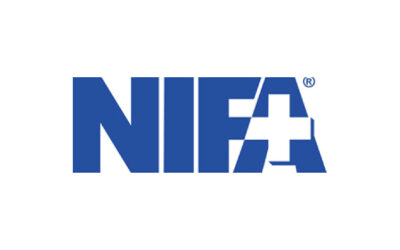By Sylvia Garcia-Houchins, RN, MBA, CIC
Everyday health care organizations’ sterile processing and perioperative staff work together to ensure that instruments used during surgical procedures are clean, sterile and safe for use. Most staff members would say in no uncertain terms, “if it isn’t clean, it isn’t sterile.”1
Specifically, that is, if tissue, bone, or other soil is left behind on a surgical instrument, its unsterile condition obviously could carry risk of infection to the next patient, and it should not be reused. Yet, Joint Commission surveyors have noted that the very same staff do not seem as concerned about using surgical instruments with pitting, etching, corrosion, oxidation, cracks, damaged insulation, and/or connectors, and even those with pieces of the instrument missing. It is also noted that staff often continue to use instruments with flaking or sticky instrument tape.
At most health care organizations, identification of an instrument with bioburden leads to an “incident report” and an investigation into error with the current process. Some health care organizations track a soiled instrument directly to an individual employee and subsequently use it as an opportunity to review normal practices and provide constructive feedback. Many health care organizations also collect data and trend the number of soiled instruments found, as a quality indicator. Trending totals may also be used as an opportunity to ensure that all users are aware to report instruments with bioburden and ensure that staff are following manufacturer instructions for use for reprocessing instruments.
Joint Commission surveys routinely identify breaks in processes that may increase the likelihood of ineffective instrument cleaning. Observing the following helps ensure proper instrument cleaning is occurring:
- Are manufacturer instructions for use available to staff performing reprocessing and has staff been trained on these instructions?
- Are users removing soil and keeping instruments moist as indicated in each instrument’s instructions for use?
- Is terminal cleaning completed as soon as possible after use? Or are instruments sitting for extended periods before being cleaned?
- Are cleaning chemicals being diluted appropriately and are cleaning solutions maintained at the correct temperature?
- Is the instrument inspection process before packaging occurring in a well-lit location with magnification?
Instruments with peeling, cracking or corrosion to identification tape could potentially flake tape particles into an open wound during surgery and result in a foreign body being left in the wound. Such instruments should be taken out of service until the tape can be removed, and if necessary, replaced. Broken instruments could delay a procedure until a replacement, break further during use, or worse, injure a patient during use. Broken instruments should be taken out of service until they are repaired or replaced. Joint Commission surveyors are routinely identifying these types of hazards that put patients and health care organizations at risk. Careful inspection and an effective maintenance and refurbishment processes can keep surgical instruments in optimal condition and improve patient safety. Identifying unsafe conditions should involve all staff, including those in sterile processing and other areas that use instruments. Staff should work together to ensure potentially unsafe instruments (such as those with bioburden) do not enter the sterile field.
In addition to instruments in disrepair making their way to the sterile field, Joint Commission surveyors have unfortunately noted with increasing frequency, the reprocessing of single-use devices (SUDs) – items labeled by their manufacturer as “single use” or disposable. These devices often consist of lower-quality material and as a result, develop pitting and oxidation which indicates possible hazard to a surveyor. Reprocessors are regulated by the Food and Drug Administration (FDA) and are subject to all regulatory requirements currently applicable to the original device manufacturer, including premarket submission requirements. If a health care organization reprocesses a single-use device, it is dangerously allowing itself to become a manufacturer of a medical device – and thus assumes all of the manufacturer’s liability, should that device fail. In addition, it takes on the liability of possible FDA rule violation. Single-use instruments must be removed from trays and discarded or sent to an FDA-approved reprocessor of SUDs.
Sterile processing and perioperative staff should obey the following key measures to ensure that their instruments are appropriate for use on patients:
- Review the manufacturer’s validated reprocessing instructions before reprocessing any device. Ensure that following the instructions will meet the level of reprocessing based on the use of the item and that appropriate equipment and products are available to follow the instructions.
- Correctly dismantle and inspect instruments for soil or damage. Staff should request, and leaders should provide, necessary lighting and tools such as lighted magnifiers to ensure ample vision while inspecting in sterile processing areas.
- Establish effective maintenance and refurbishment processes to keep instruments in optimal condition. All staff should be empowered to identify instruments of subpar quality and prevent their use – even if it causes delaying or rescheduling of affected cases.
- Provide clear training and direction to reprocessing staff on when to remove an instrument or seek guidance from a supervisor while identifying an item that is no longer safe to undergo reprocessing.
- Ensure staff at point-of-use can identify when an instrument should not be used – even if it is in sterile packaging – and know how to return and report the occurrence for quality monitoring.
- Train users to appropriately discard SUDs and support the process by ensuring disposal containers at point of use for safe disposal.
- Train users on key issues that can lead to damage of instruments and devices, including erroneously using delicate instruments meant for use on tissues, to be used on other items (e.g., gauze, tape, tubing, etc.); prolonged exposure to blood and other body fluids or allowing these substances to dry on instruments; use of saline or corrosives such as bleach or inappropriate cleaning chemicals; use of abrasives; or transporting instruments incorrectly so that there is risk of damage.
- Create and effective process for identifying instruments that require repair or replacement, in areas where they are used since sometimes instruments are damaged during use.
- When tracing sterilization practices, periodically open and inspect instruments in peel pouches and trays to ensure that they are appropriate for sterilization and use.
- Create a “good catch” reporting process that rewards identification of instruments that should not be reprocessed or used so that tracking and trending is accurate for budgeting and quality purposes.
It is imperative that ASC leaders and staff work together to prevent use of a soiled, damaged or inappropriately reused SUD that put patients at risk. Since patients face risks related to health care every day, they should not have to be placed at risk from soiled, damaged or inappropriately reused SUDs. All staff involved in reprocessing and use of instruments in health care procedures must take personal responsibility for both providing and using safe instruments and preventing use of unsafe instruments. Health care staff should be empowered to stop the line and ask, “Is this instrument safe to use on a patient?”
— Sylvia Garcia-Houchins, RN, MBA, CIC, is the director of infection prevention and control in the office of quality & patient safety at The Joint Commission.
1 ECRI If It’s Not Clean, It’s Not Sterile: Reprocessing Contaminated Instruments. Event Reporting & Analysis – Alerts. Published 4/11/2017. Accessed November 21, 2021, at https://www.ecri.org/components/PSOCore/Pages/e-lert041117.aspx









